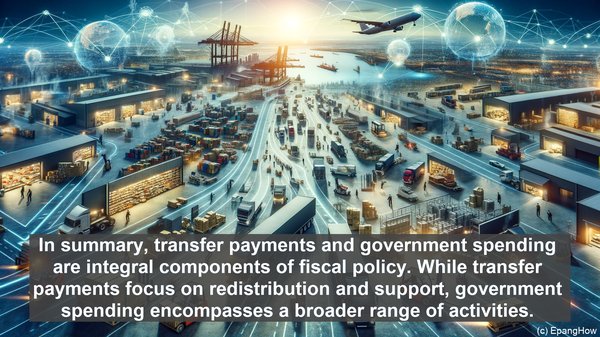Introduction: The Dual Facets of Public Finance
Hello, and welcome to our article on transfer payments and government spending. When it comes to public finance, these two aspects play a pivotal role. While they may seem similar at first glance, there are fundamental differences that we’ll explore in detail.

Defining Transfer Payments
Transfer payments refer to the redistribution of wealth from one group or entity to another. These payments are typically made by the government and aim to provide financial assistance or support. Common examples include social security benefits, welfare programs, and unemployment compensation. The key characteristic of transfer payments is that they do not involve the production of goods or services.
Understanding Government Spending
On the other hand, government spending encompasses a broader spectrum. It includes not only transfer payments but also the direct purchase of goods and services. When the government invests in infrastructure, defense, education, or healthcare, it is considered government spending. Unlike transfer payments, this type of expenditure directly contributes to the production or provision of goods and services.
The Economic Implications
Both transfer payments and government spending have significant economic implications. Transfer payments, by providing financial assistance to individuals or groups, can stimulate demand and contribute to economic stability. Government spending, especially on infrastructure or public projects, can create jobs, boost productivity, and drive economic growth. However, it’s important to strike a balance, as excessive spending or a heavy reliance on transfer payments can strain public finances.

The Policy Considerations
When it comes to policy decisions, transfer payments and government spending require different approaches. Transfer payments are often means-tested, meaning they are based on the recipient’s income or circumstances. This ensures that those in genuine need receive assistance. Government spending, on the other hand, requires careful allocation and prioritization. Policymakers must consider the long-term benefits, potential returns, and overall budgetary constraints.
